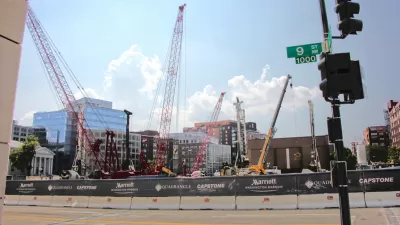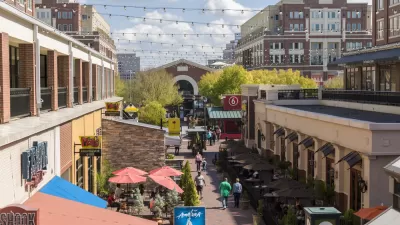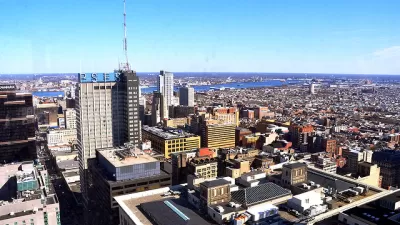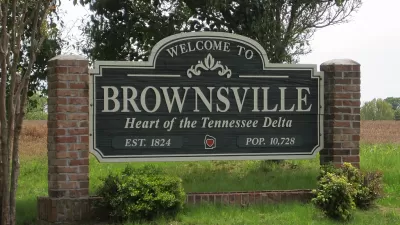The program, which gives tax credits to investors, has resulted in added jobs, increased incomes, and low rates of displacement.

Oscar Perry Abello reports on new research from the Urban Institute that analyzes the effects of the federal New Markets Tax Credit (NMTC), a program established in 2000 that "provides an incentive for investment in low-income communities." According to the Tax Policy Center, "NMTC investors provide capital to community development entities (CDEs), and in exchange are awarded credits against their federal tax obligations." The study, which looked at 5,746 investments in the program's first round, "finds the New Markets Tax Credit program does what it promises, most of the time, and doesn’t seem to cause displacement in the way that many fear the newer Opportunity Zones tax incentives may."
Between 2001 and 2017, investors—mainly large banks—received $12.2 billion in tax credits, which translated into $107 billion in total investment. In terms of uses, retail projects proved most popular with 17% of projects. "Manufacturing and food processing projects came in next, at 828 investments, followed by 719 office or professional service projects, 619 health care facilities projects, and 600 school and child care projects. The rarest were investments into financial intermediaries that serve low-to-moderate income communities, like Hope Credit Union."
The type of project can dictate the number and quality of jobs created, as well as the project's impact on the broader community. "Hope Credit Union used New Markets Tax Credits to grow during the Great Recession, going from less than ten branches to nearly 30 across the Deep South — creating or preserving a good number of jobs internally, but also having an even larger indirect impact by preserving access to credit in many communities that lost all other banking providers." The study also found an average of "17.7 new firms and 100 new jobs" in census tracts with NMTC projects and "a $562 increase in median incomes for some census tracts." The research showed little displacement in NMTC neighborhoods, with "only a modest increase in the turnover rate."
To implement similarly successful programs, the researchers recommend a "rigorous process to certify eligible projects" and "sizing incentives based on potential impact, as opposed to tying incentives to potential rise in property values–as is the case with Opportunity Zones."
FULL STORY: Who Benefits From the New Markets Tax Credit? New Research Dives Into 5,000 Projects to Find Out

Americans May Be Stuck — But Why?
Americans are moving a lot less than they once did, and that is a problem. While Yoni Applebaum, in his highly-publicized article Stuck, gets the reasons badly wrong, it's still important to ask: why are we moving so much less than before?

Using Old Oil and Gas Wells for Green Energy Storage
Penn State researchers have found that repurposing abandoned oil and gas wells for geothermal-assisted compressed-air energy storage can boost efficiency, reduce environmental risks, and support clean energy and job transitions.

Placekeeping: Setting a New Precedent for City Planners
How a preservation-based approach to redevelopment and urban design can prevent displacement and honor legacy communities.

San Francisco’s Muni Ridership Grew in 2024
The system saw its highest ridership since before the Covid-19 pandemic, but faces a severe budget shortage in the coming year.

Colorado Lawmakers Move to Protect BRT Funding
In the face of potential federal funding cuts, CDOT leaders reasserted their commitment to planned bus rapid transit projects.

Safe Streets Funding in Jeopardy
The Trump administration is specifically targeting bike infrastructure and other road safety projects in its funding cuts.
Urban Design for Planners 1: Software Tools
This six-course series explores essential urban design concepts using open source software and equips planners with the tools they need to participate fully in the urban design process.
Planning for Universal Design
Learn the tools for implementing Universal Design in planning regulations.
Heyer Gruel & Associates PA
City of Moreno Valley
Institute for Housing and Urban Development Studies (IHS)
City of Grandview
Harvard GSD Executive Education
Salt Lake City
NYU Wagner Graduate School of Public Service
City of Cambridge, Maryland





























